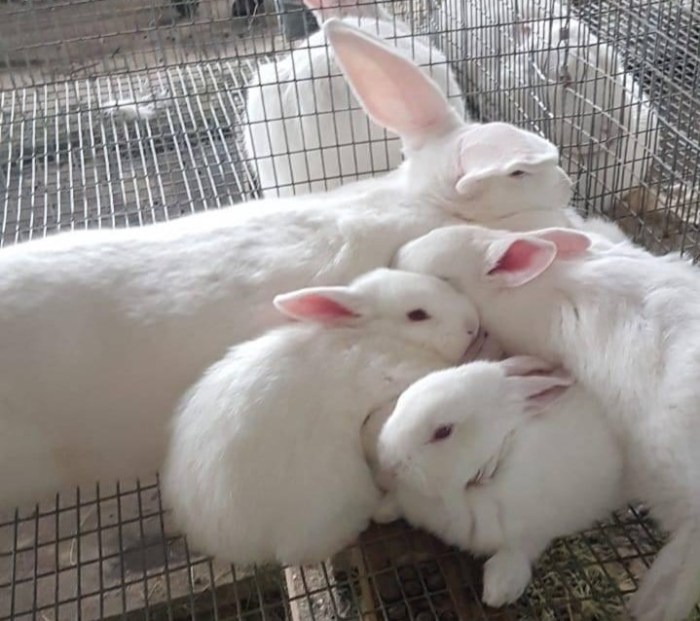In the fascinating world of rabbit reproduction, the frequency of mating plays a crucial role. Understanding this aspect is essential for rabbit owners, breeders, and anyone curious about the intricate behaviors of these captivating creatures. This comprehensive guide delves into the complexities of rabbit mating, exploring the typical frequency, influencing factors, and implications for breeding.
Rabbits, renowned for their prolificacy, exhibit a remarkable mating behavior that is influenced by a multitude of factors. Age, health, environment, and breed all contribute to the frequency and patterns of mating in these animals. By unraveling these factors, we gain insights into the fascinating reproductive strategies employed by rabbits to ensure the continuation of their species.
Frequency of Rabbit Mating
Rabbits are highly prolific breeders, and their mating frequency can vary depending on several factors. Understanding these factors can help rabbit owners optimize breeding and manage their rabbit populations effectively.
Age
The age of rabbits plays a significant role in their mating frequency. Young rabbits reach sexual maturity at around 3-4 months of age, but their mating activity may be sporadic during the first few months. As rabbits mature, their mating frequency typically increases, peaking between 6-12 months of age.
After this period, their mating activity may gradually decline with age.
Health
The overall health of rabbits can also influence their mating frequency. Healthy rabbits with a balanced diet and proper veterinary care are more likely to engage in regular mating behavior. Conversely, rabbits suffering from illnesses or nutritional deficiencies may experience decreased mating activity.
Environment
Environmental factors, such as temperature, lighting, and space availability, can also affect rabbit mating frequency. Rabbits prefer to mate in warm, well-lit environments with ample space to move around. Stressful or cramped conditions can lead to reduced mating activity.
Factors Affecting Rabbit Mating
The frequency of mating in rabbits is influenced by various factors, including environmental conditions, the availability of resources, and the reproductive status of the individuals involved.
Environmental Conditions
- Temperature: Rabbits are more likely to mate during cooler months when the temperature is between 50 and 70 degrees Fahrenheit (10-21 degrees Celsius).
- Daylight: The length of daylight can also affect mating behavior. Rabbits are more likely to mate when the days are longer.
Availability of Resources
- Food: Rabbits need an adequate supply of food in order to produce viable offspring. If food is scarce, rabbits may not mate as frequently.
- Water: Rabbits also need access to clean water in order to stay hydrated and produce healthy sperm and eggs.
Reproductive Status
- Age: Rabbits reach sexual maturity at around 4-6 months of age. However, they are most fertile between the ages of 8-12 months.
- Pregnancy: Female rabbits are not able to mate while they are pregnant.
- Lactation: Female rabbits are not able to mate while they are nursing their young.
Implications for Rabbit Breeding

The frequency of mating plays a crucial role in successful rabbit breeding. Understanding the optimal frequency for your breeding program can significantly impact the productivity and health of your rabbits.
To optimize mating frequency, consider the following factors:
Rabbit Age and Health
The age and health of the rabbits should be taken into account. Young rabbits may not be ready for breeding, while older rabbits may experience fertility issues. Ensuring that rabbits are healthy and in good condition is essential for successful mating.
Breeding Objectives
The breeding objectives also influence mating frequency. If the goal is to produce a large litter, more frequent matings may be necessary. However, if the focus is on producing quality offspring, a less frequent mating schedule may be preferred.
Rabbit Breed
Different rabbit breeds have varying reproductive rates. Some breeds may require more frequent matings, while others may be more successful with less frequent matings. Understanding the reproductive characteristics of the specific breed is crucial.
Environmental Conditions
Environmental conditions, such as temperature and light, can also affect mating frequency. Optimal conditions for rabbit breeding include a temperature range of 55-70°F and a light cycle of 12-14 hours of light per day.
By considering these factors and adjusting mating frequency accordingly, breeders can optimize their breeding programs for successful and productive results.
Closure
In conclusion, the frequency of rabbit mating is a dynamic and complex aspect of their reproductive behavior. Understanding the factors that influence this frequency is crucial for optimizing breeding practices, ensuring the well-being of rabbits, and gaining a deeper appreciation for the intricate reproductive strategies of these fascinating creatures.
By delving into the world of rabbit mating, we not only expand our knowledge but also foster a greater understanding of the animal kingdom’s remarkable diversity.
FAQs
How often do rabbits typically mate?
Rabbits can mate multiple times a day, with the frequency varying depending on factors such as age, health, and environment.
What are the signs that rabbits are mating?
Behavioral signs include chasing, mounting, and vocalizations. Physical changes include the doe’s vulva becoming red and swollen.
How long does rabbit mating typically last?
The duration of mating can vary, but it typically lasts for several minutes.
What are the implications of mating frequency for rabbit breeding?
Optimizing mating frequency is crucial for successful breeding, as it influences litter size, pregnancy rates, and the overall health of the rabbits.